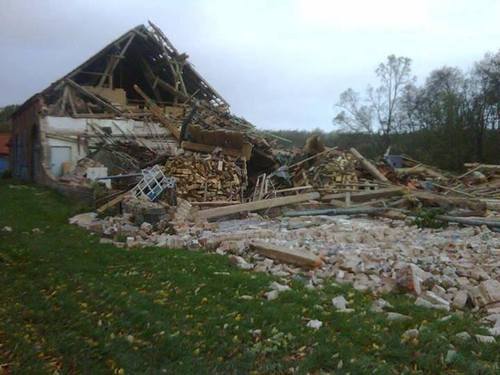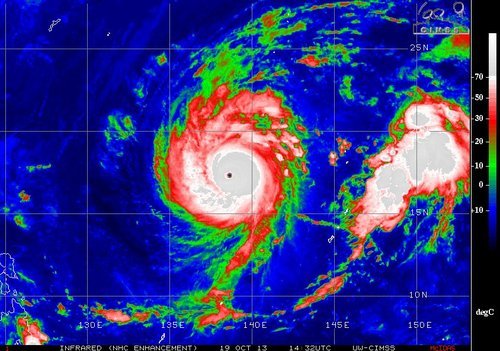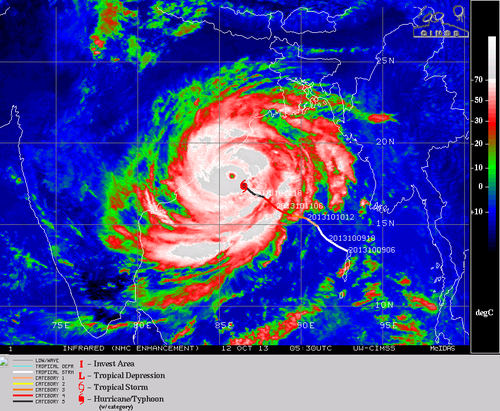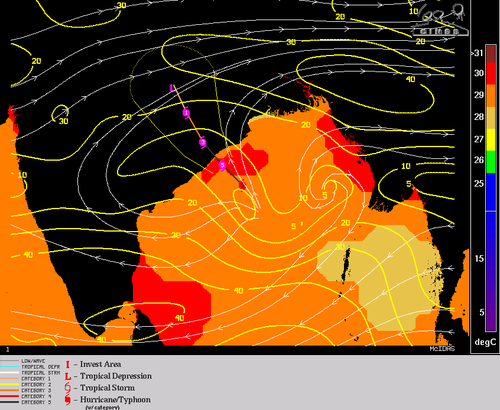Quadruple threat in the US this Week
All kinds of extreme weather have been plaguing the United States this week; from tropical storms, tornadoes to blizzards to severe Santa Ana winds, they’ve just about seen it all. It was all happening yesterday due to a dynamic low pressure system centered in the Northern US Plains. High pressure building behind the low pressure system was responsible for the Santa Ana winds. The tropical storm, a completely separate system, has been targeting the gulf shores for a few days now.
The powerful fall low pressure system was drawing in brisk air from the north behind it which helped produce ideal conditions for blizzard conditions in the Black Hills. It was not unusual to see snowfall rates in excess of 5cm/h throughout the day on Friday in the region. The hardest hit area in regards to snow looked to be Lead, SD, which by Friday night had received 110cm (in less than 48 hours!), and another 20-30cm could fall before deformation zone moves off.
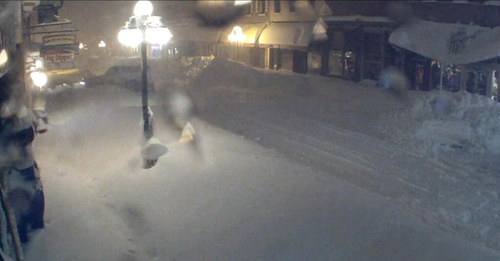
Streetcam picture of the snow accumulated in Lead, SD. Keep in mind there was no snow on the ground less than 48 hours ago! (Source: Twitter: @TylerJRoney)

Incredible image of a large snow drift almost completely covering the front door in Deadwood, SD. (Source: Twitter: @ReadingReineke)
In the warm sector of the same system severe thunderstorms were spawned on Friday. A few supercells formed in the late afternoon near the triple point in northern Nebraska/extreme southern South Dakota. With extremely favourable conditions for tornadoes, storms quickly started rotating. The number of tornadoes is still unclear at this time but a violent, long tracked, wedge tornado which was reported to be over a mile wide, touched down. Per initial reports it appears as though Wayne, NE was the hardest hit on Friday by this tornado. Houses and factories were completely demolished and two dozen people were reported injured. A squall line also evolved further south into Kansas and Oklahoma where large hail and severe wind were the main threats.

Damage of a factory destroyed in Wayne, NE from the tornado that hit the town. (Source: Twitter: @action3news)
The Santa Ana winds have been a treat to California this week, too. These winds get funneled through the Mountains of Southern California, subsequently warm and dry as they descend in elevation. Gusts in excess of 110km/h have been tearing through Southern California bringing with them an extreme fire risk. This prompted the National Weather Service (NWS) to issue multiple red flag warnings for the area – these warnings are issued when conditions are ideal for wildfires and quick intensification. The NWS also added that these were the worst winds in five years.
As for the tropical storm (Karen) spinning in the Gulf of Mexico, it does not appear that it will become a significant hurricane. Strong wind shear has been affecting its development for the past few days. It will likely make landfall as a tropical storm with winds of tropical storm force, but possibly even weaker depending on how much the shear tears the storm apart. The location of the landfall looks to be on the south-east gulf shores of Louisiana. It doesn’t appear as though its effects will be too significant to the US – heavy rain will be the main threat with Karen. Otherwise, the tropics continue to remain unusually calm and no other developments elsewhere in the Atlantic basin are expected in the near future.
